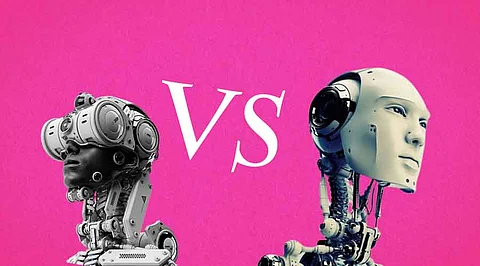
- Insights
- Cryptocurrencies
- Stocks
- White Papers
- Industry
- Geography
- Insights
- Cryptocurrencies
- Stocks
- White Papers
- Industry
- Geography


In the ever-expanding landscape of artificial intelligence and robotics, the distinction between humanoids and androids emerges as an enigmatic exploration. "Unraveling the Enigma" embarks on a profound journey, delving deep into the distinctive realms of these artificial entities. As we navigate the pinnacle of artificial intelligence advancements, the article scrutinizes the intricate differences that set humanoids and androids apart. From their physical attributes to cognitive capabilities, the discourse aims to decipher the complex tapestry of the robotic landscape. Amidst the uncharted horizons beyond, this exploration is not just a comparison but a quest to fathom the evolving dynamics that shape the future of human-machine interactions and redefine the boundaries of technological possibilities.
Humanoids and androids share the common thread of resembling the human form, but the devil is in the details. Humanoids are robots designed to replicate human movements and interactions, focusing on physical resemblance. On the other hand, androids transcend mere mimicry; they are humanoid robots with advanced artificial intelligence, capable of autonomous decision-making and learning.
In terms of physical attributes, humanoids and androids align in their overall humanoid form. Humanoids mimic the human anatomy, featuring limbs, a torso, and a head. These robots often incorporate advanced sensors and motors to simulate human-like movements, making them suitable for tasks that require a degree of dexterity.
Cognitive Capabilities
The cognitive capabilities of these artificial entities mark a significant point of departure. Humanoids focus on imitating human movements and behaviors but lack the advanced artificial intelligence found in androids. Their cognitive capabilities may involve basic decision-making, but they primarily excel in physical mimicry.
Androids, in contrast, are characterized by their high-level cognitive capabilities. They possess AI systems that enable them to learn from experiences, adapt to changing circumstances, and make autonomous decisions. This advanced intelligence sets them apart as more than mere physical replicas; they are capable of complex problem-solving and decision-making.
Both humanoids and androids find applications in various industries, but the scope of their contributions varies.
Humanoids are often utilized in tasks where human-like movement and interaction are beneficial. For example, they can assist in medical procedures, conduct research in hazardous environments, and even serve in customer service capacities. Their applications are diverse but typically revolve around tasks that benefit from human-like physical attributes.
On the other hand, androids have a broader spectrum of applications due to their advanced AI. They can be employed in complex scenarios such as healthcare assistance, eldercare, and even roles that require emotional intelligence, like companionship or therapeutic interactions. The cognitive capabilities of androids extend their utility beyond physical tasks.
Technological advancements in robotics have propelled both humanoids and androids into new frontiers.
Humanoids have seen remarkable strides in sensor technology, allowing for more precise movements and interactions. These advancements primarily focus on enhancing physical mimicry and refining the mechanics of humanoid robots.
Androids represent the pinnacle of robotics and AI integration. Their technological advancements extend beyond physical attributes to encompass sophisticated artificial intelligence, machine learning algorithms, and the ability to process and interpret complex data.
The ethical considerations surrounding humanoids and androids diverge based on their cognitive capabilities.
Humanoids raise ethical questions about privacy, consent, and their safe integration into human environments. As they lack the advanced cognitive functions of androids, concerns about ethical decision-making are somewhat mitigated.
The ethical considerations surrounding androids are more profound. Questions arise about accountability, moral decision-making, and the potential consequences of autonomous actions.
The future of humanoids lies in refining their physical capabilities and expanding their applications. As technology progresses, humanoids may play increasingly pivotal roles in collaborative work with humans.
For androids, the future points toward even greater integration of artificial intelligence, machine learning, and emotional intelligence. The vision is not only to have them assist humans but also actively contribute to scientific research, healthcare, and various industries.
